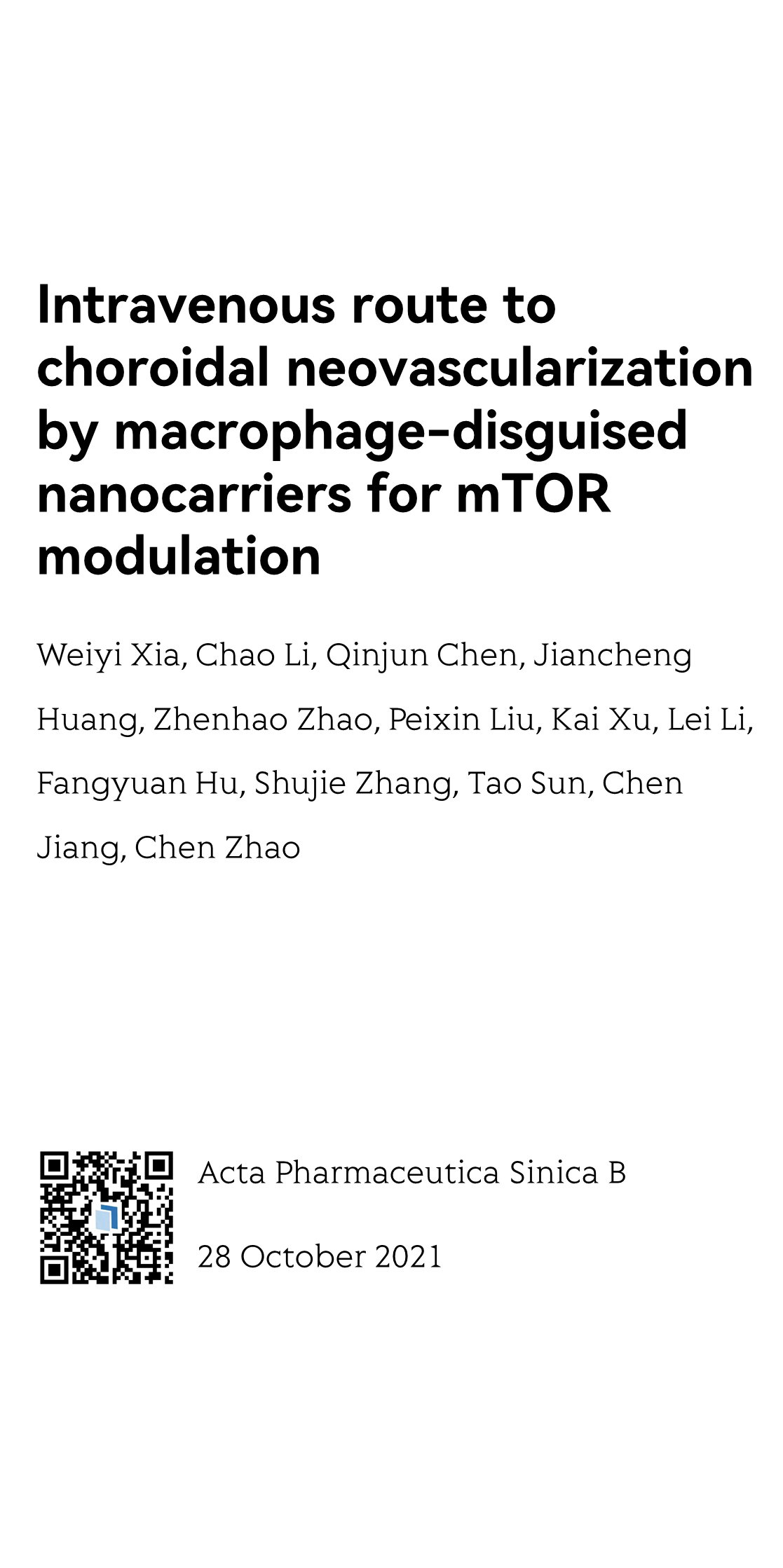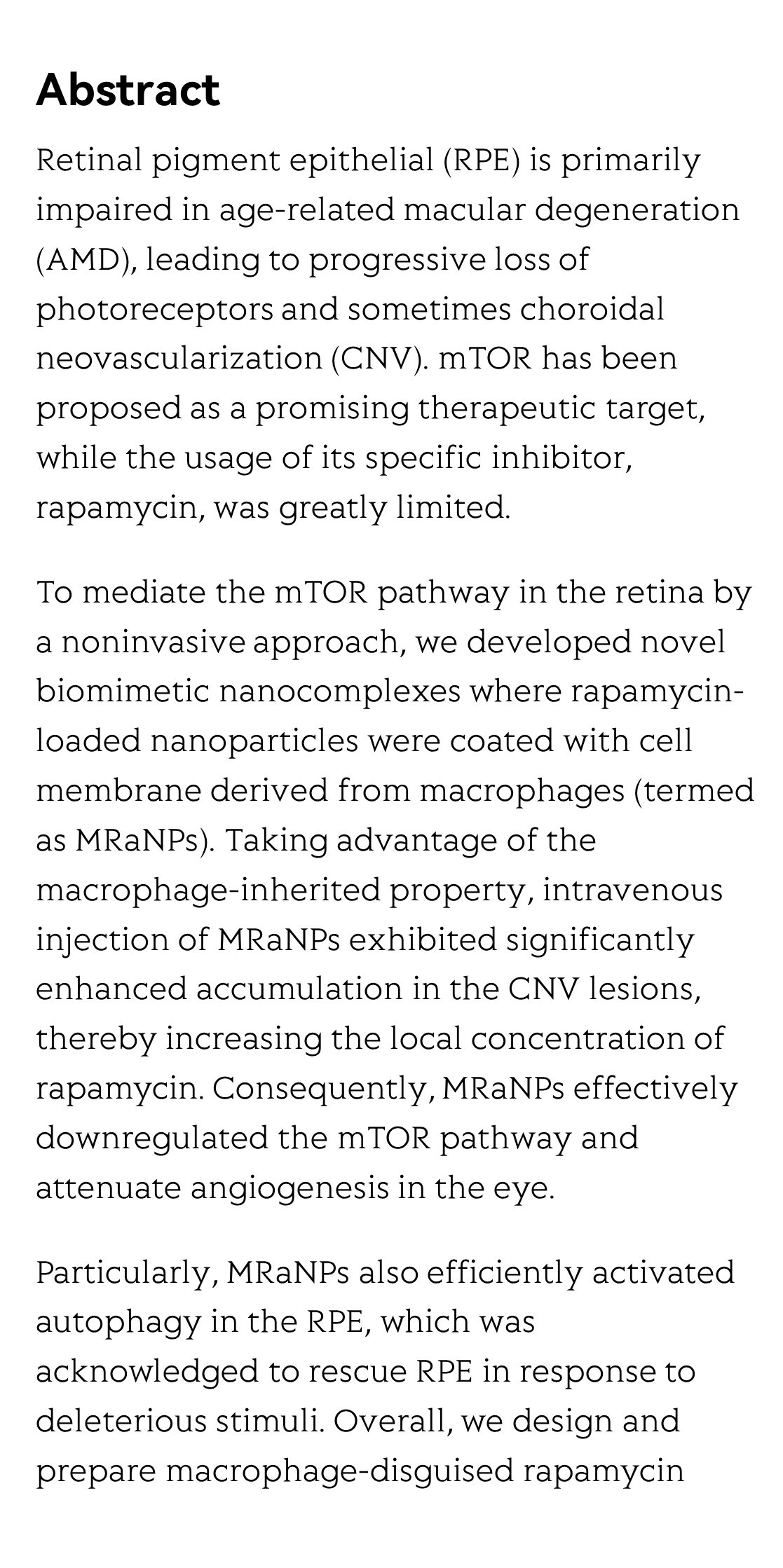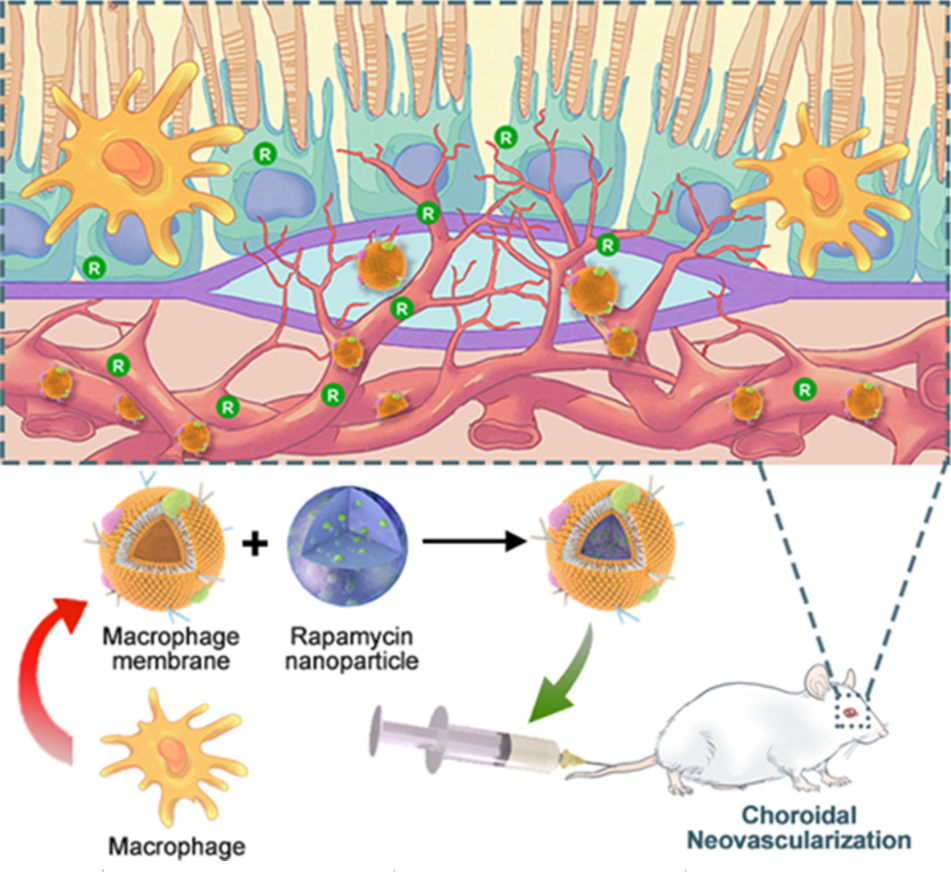(Peer-Reviewed) Intravenous route to choroidal neovascularization by macrophage-disguised nanocarriers for mTOR modulation
Weiyi Xia ¹, Chao Li 李潮 ², Qinjun Chen 陈钦俊 ², Jiancheng Huang ¹, Zhenhao Zhao 赵振浩 ², Peixin Liu 刘沛鑫 ², Kai Xu ¹, Lei Li ¹, Fangyuan Hu 胡方圆 ¹, Shujie Zhang 章淑杰 ¹, Tao Sun 孙涛 ², Chen Jiang 蒋晨 ², Chen Zhao 赵晨 ¹
¹ Department of Ophthalmology and Vision Science, Eye & ENT Hospital, Shanghai Medical School, Fudan University, Shanghai 200031, China
中国 上海 复旦大学附属眼耳鼻喉科医院
² Key Laboratory of Smart Drug Delivery, Ministry of Education, Department of Pharmaceutics, School of Pharmacy, Fudan University, Shanghai 201203, China
中国 上海 复旦大学药学院 药剂学 智能化递药教育部重点实验室
Abstract
Retinal pigment epithelial (RPE) is primarily impaired in age-related macular degeneration (AMD), leading to progressive loss of photoreceptors and sometimes choroidal neovascularization (CNV). mTOR has been proposed as a promising therapeutic target, while the usage of its specific inhibitor, rapamycin, was greatly limited.
To mediate the mTOR pathway in the retina by a noninvasive approach, we developed novel biomimetic nanocomplexes where rapamycin-loaded nanoparticles were coated with cell membrane derived from macrophages (termed as MRaNPs). Taking advantage of the macrophage-inherited property, intravenous injection of MRaNPs exhibited significantly enhanced accumulation in the CNV lesions, thereby increasing the local concentration of rapamycin. Consequently, MRaNPs effectively downregulated the mTOR pathway and attenuate angiogenesis in the eye.
Particularly, MRaNPs also efficiently activated autophagy in the RPE, which was acknowledged to rescue RPE in response to deleterious stimuli. Overall, we design and prepare macrophage-disguised rapamycin nanocarriers and demonstrate the therapeutic advantages of employing biomimetic cell membrane materials for treatment of AMD.
Flicker minimization in power-saving displays enabled by measurement of difference in flexoelectric coefficients and displacement-current in positive dielectric anisotropy liquid crystals
Junho Jung, HaYoung Jung, GyuRi Choi, HanByeol Park, Sun-Mi Park, Ki-Sun Kwon, Heui-Seok Jin, Dong-Jin Lee, Hoon Jeong, JeongKi Park, Byeong Koo Kim, Seung Hee Lee, MinSu Kim
Opto-Electronic Advances
2025-09-25
Dual-frequency angular-multiplexed fringe projection profilometry with deep learning: breaking hardware limits for ultra-high-speed 3D imaging
Wenwu Chen, Yifan Liu, Shijie Feng, Wei Yin, Jiaming Qian, Yixuan Li, Hang Zhang, Maciej Trusiak, Malgorzata Kujawinska, Qian Chen, Chao Zuo
Opto-Electronic Advances
2025-09-25







